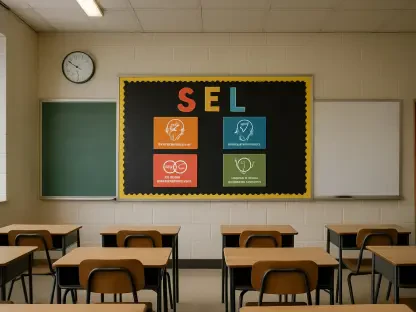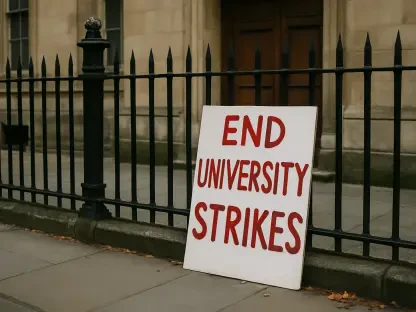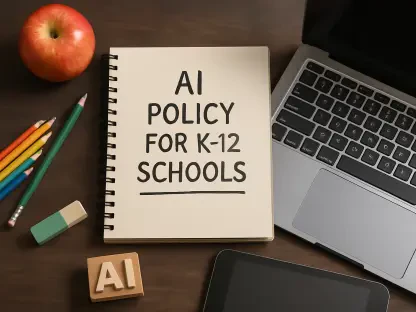Indiana’s recent policy decision to expand the Choice Scholarship Program marks a significant shift in the state’s approach to education by removing income eligibility requirements. This expansion opens private school vouchers to all families, aiming to provide broader school choice options and positioning Indiana as a leader in universal access to private education. This policy initiative has sparked debate among educators, parents, and policymakers over the potential impact on the state’s education system. Amid varying perspectives, the expansion reflects broader national trends favoring school choice. The change occurs as the state navigates complex economic and budgetary challenges, prompting discussions on resource allocation and the broader implications for public and private education sectors. Indiana’s move is part of a larger policy narrative considering both the opportunities for tailoring education to meet diverse family needs and the risks of diverting resources from public schools. These debates underscore the complexities of balancing fiscal constraints, political ideologies, and educational priorities in shaping the future of Indiana’s schooling landscape.
The Economic and Political Landscape
The expansion of Indiana’s Choice Scholarship Program is set against an intricate backdrop of economic and political considerations. Facing a projected revenue shortfall, Indiana’s legislature has made pivotal budgetary choices, including a 2% annual funding increase for K-12 public schools despite broader fiscal challenges. These decisions reflect the state’s strategic prioritization of maintaining public school funding while simultaneously embracing substantial educational reforms. The policy shift underscores a nuanced approach to education policy, in which the legislature navigates revenue limitations while supporting the expansion of private school choice through vouchers. This balance illustrates Indiana’s commitment to balancing immediate fiscal constraints with its long-term educational commitments. In this context, the state’s approach to school vouchers serves as a microcosm of policy debates occurring across the U.S., whereby states weigh the benefits of school choice against the prospect of straining public school resources. By expanding access to vouchers, Indiana’s policymakers aim to empower parents with more educational options, aligning with broader trends that champion educational choice and adaptability.
Proponents of School Choice and Their Arguments
Advocates of Indiana’s expanded voucher program highlight the empowerment of parental choice as a key benefit. These supporters argue that by abolishing income restrictions, the program now offers equitable educational opportunities for families across socio-economic strata. Proponents suggest that this freedom to choose supports students’ unique educational needs and aspirations, allowing parents to tailor educational trajectories to align with individual preferences. The emphasis on parental agency in education resonates with a broader societal trend that values personalized learning experiences. In this scenario, removing barriers to accessing private schooling options is seen as a decisive step towards broader educational success. Proponents believe that school choice can lead to enhanced educational outcomes by fostering competition, innovation, and accountability within the educational system. Moreover, advocates claim that vouchers’ expansion may cultivate a diverse array of schooling environments, promoting educational diversity and potentially driving improvements in academic performance.
Critiques of the Voucher Expansion
The expansion of Indiana’s school voucher program has attracted significant criticism, particularly from public school advocates concerned about its potential repercussions. Critics argue that increased funding for vouchers poses a risk of siphoning essential resources away from public schools, which educate the majority of students. They contend that the redirection of funds towards private schools could exacerbate existing disparities within the state’s educational system, leaving many public schools struggling to maintain their quality and essential services. Additionally, opponents warn that this policy primarily benefits wealthier families, who were previously ineligible but now have the means to profit from taxpayer-funded vouchers. The critique urges policymakers to consider the long-term socio-economic implications, including potential widening gaps between affluent and less privileged communities. Critics emphasize the necessity of safeguarding equitable access to quality public education for all students, calling for a measured approach that does not compromise public school integrity in favor of expanding private schooling options.
Legislative Dynamics and School Funding Reforms
The expansion of Indiana’s school vouchers reflects a broader legislative consensus among the state’s Republican lawmakers to prioritize educational choice and reform. Even amid fiscal pressures stemming from a projected revenue shortfall, these policymakers have expressed commitment to maintaining resource allocation for innovative educational initiatives. Despite Democratic opposition citing concerns over equity and timing, the legislative discourse illuminates the ongoing debate over educational priorities and the role of public versus private education. The decision to widen access to vouchers signifies a legislative focus on expanding school choice as a means of enhancing educational quality and opportunity across the state. In tandem, the proposed school funding reforms aim to address potential inequalities by adjusting budgetary allocations, including property tax funding for charter schools and revising funding structures for virtual schools. These measures indicate a comprehensive approach towards promoting financial equity within the broader educational landscape, seeking to balance choice, resource distribution, and effectiveness in educational delivery.
Public vs. Private Education Implications
The expanded availability of school vouchers has escalated discussions on the implications for both public and private education in Indiana, prompting stakeholders to evaluate the emergent landscape of schooling choices and priorities. As the policy encourages enrollment in private schools, it raises questions about the future stability and quality of public education. The potential shift of resources and students towards private institutions could necessitate a strategic reevaluation of educational objectives within the public system, prompting debates on the allocation of funds, teacher retention, and infrastructure support. While vouchers offer families increased versatility in education, the broader impact on public schools remains a contentious topic. The new policy underscores the necessity of thoughtful consideration of long-term effects on educational quality and equity in public institutions. As Indiana continues to navigate this evolving educational environment, stakeholders across the board face a crucial task in balancing the benefits of school choice with the imperative to preserve robust public education options for all students in the state.
Supplemental Educational Initiatives
As part of the broader educational policy shift, Indiana’s budgetary allocations encompass a variety of secondary reforms and initiatives beyond the expansion of school vouchers. Adjustments to Educational and Career Scholarship Accounts reflect a targeted approach towards enhancing specialized learning opportunities and promoting readiness for future employment. Additional structural changes, such as the incorporation of property tax funding for charter schools, aim to bridge financial gaps and promote greater parity between different types of educational institutions. Furthermore, the maintenance of funding levels for virtual schools at 85% of traditional school funding highlights ongoing concerns regarding program efficacy and resource allocation. These supplemental measures are indicative of Indiana’s multifaceted strategy to foster educational equity and ensure effective utilization of resources across the state’s diverse array of schooling options. Collectively, these initiatives signify a concerted effort to address holistic educational needs, aiming to provide both immediate support and adaptability in response to evolving educational demands.
Governor’s Strategic Educational Investment
Governor Mike Braun’s administration has committed substantial financial resources to support a series of strategic educational initiatives designed to bolster Indiana’s academic infrastructure and outcomes. Notably, the allocation of $100 million within the budget underscores a proactive approach to advancing teacher recruitment, expanding academic programs, and enhancing literacy throughout the state. These targeted investments aim to address immediate educational gaps while also catering to long-term objectives, such as promoting career readiness and resilience in high-need areas. The focus on enhancing teaching quality and availability signals a recognition of educators as pivotal to achieving sustained educational success. Additionally, the initiatives underscore an intent to adapt educational frameworks to contemporary needs and expectations, facilitating improvements in both specialized and traditional disciplines. Governor Braun’s educational strategy endeavors to align fiscal priorities with broader policy ambitions, emphasizing readiness to tackle current and future challenges in Indiana’s dynamic educational landscape.
Aligning Policy with Broader Educational Trends
Indiana’s choice to expand its school voucher program aligns with broader national trends favoring the adoption of educational choice policies, despite fiscal constraints and revenue challenges. The state’s expansion reflects a commitment to providing families with diverse schooling options, mirroring ongoing debates on how best to balance traditional public school systems with new educational alternatives. Conversations surrounding the role of vouchers in promoting educational equity highlight the complexities of ensuring diverse options without detracting from public school resources. As other states observe the outcomes of Indiana’s policy decisions, the broader discourse on school choice and equitable funding continues to evolve. Indiana’s determination to uphold this balance amid its revenue landscape showcases a desire to integrate modern educational philosophies while safeguarding the fundamental integrity of its public education system. This dynamic policy approach not only demonstrates Indiana’s proactive stance in educational reform but also contributes to the larger national conversation on educational diversity and sustainability.
Emerging Outcomes and Future Considerations
Indiana’s recent decision to expand the Choice Scholarship Program marks a pivotal change in the state’s education policy. By eliminating income eligibility requirements, private school vouchers are now accessible to all families, with the goal of broadening school choice options. This positions Indiana as a leader in promoting universal access to private education. However, this initiative has ignited widespread debate among educators, parents, and policymakers about its potential effects on Indiana’s education system. The policy shift aligns with national trends that favor increased school choice. Meanwhile, the state faces complex economic and budgetary challenges, sparking discussions on how to allocate resources between public and private sectors. Indiana’s move is part of a larger dialogue about the potential benefits of customizing education to meet diverse family needs against the risks of diverting resources away from public schools. These debates highlight the challenges of balancing fiscal limitations, political beliefs, and educational goals in shaping Indiana’s educational future.









